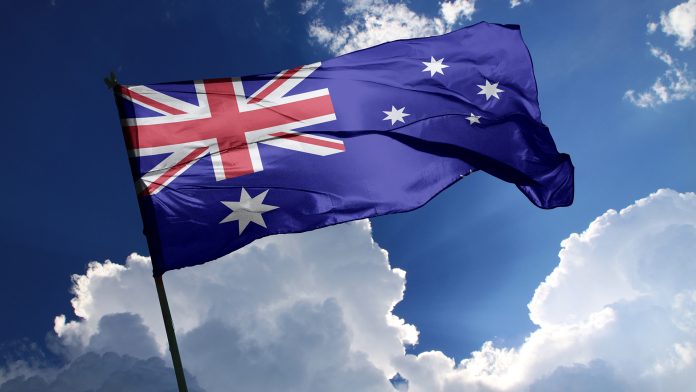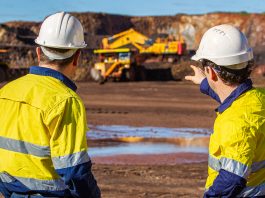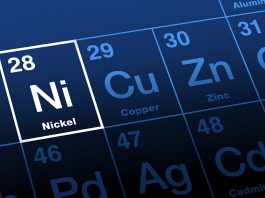Dr Chris Vernon, Critical Minerals Lead Expert at CSIRO, discusses the promise of Australia’s critical minerals to propel the country towards a resilient and sustainable future.
Australia’s abundance of critical minerals holds a promising opportunity for the country’s growth.
The sector thrives on innovation and collaboration, positioning the nation for sustained economic prosperity and strategic resilience.
At the forefront of groundbreaking discoveries and technological advancements is Australia’s National Science Agency, CSIRO.
From pioneering research in mineral processing to developing cutting-edge technologies for renewable energy, CSIRO continues to push the boundaries of scientific exploration and drive innovation across various sectors.
To find out more about Australia’s critical minerals sector, opportunities for growth, and CSIRO’s work in the industry, Innovation News Network spoke to CSIRO’s Critical Minerals Lead Expert, Dr Chris Vernon.
What are the significance of critical minerals to Australia’s economy and strategic interests?
We’re quite enthused about Australia’s abundance of critical minerals. Nearly all the minerals on the critical list are found here.
However, their current economic impact isn’t as substantial as commonly perceived. While there’s often hype about critical minerals leading to vast wealth, the most current economic value is in iron ore, gold, and alumina.
For instance, in a good year, iron ore constitutes an industry worth $80 to $100bn. This is followed by gold at $25bn and alumina, which is estimated to be around $20bn.
The only critical mineral that came close, until recently, was lithium, reaching approximately $16bn in exports.
Nonetheless, there’s significant potential in Australia’s critical minerals, especially if we invest more in downstream processing. By refining these minerals into higher-value products like lithium hydroxide or cathode active materials, we can greatly increase their export value.
Strategically, merely exporting lithium concentrate isn’t particularly advantageous for Australia.
However, by advancing our processing capabilities, we can tap into different markets, diversifying our trade and strengthening our position in global supply chains. This shift towards value-added production opens up new opportunities and reduces dependence on conventional markets.
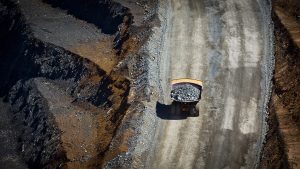
Can you elaborate on the complexities surrounding critical minerals?
Critical minerals is a captivating field because it’s not just about complex chemistry or understanding supply chains; geopolitics plays a significant role. Although China dominates refined mineral production, the materials are available elsewhere. It is just a matter of initiating and funding the extraction process.
Adding to the industry’s complexity is the Critical Minerals List, which has expanded over time. Recently, Resources Minister Madeleine King added nickel to the list, bringing the total to around 30 minerals.
However, when focusing on essential needs, such as critical minerals for the energy transition, the list narrows down considerably, highlighting those crucial for lithium-ion batteries and high-efficiency motors like rare earths.
In addition to the expanding Critical Minerals List and the essential role of critical minerals in the energy transition, it’s worth noting that the Australian Government’s Critical Minerals Prospectus plays a pivotal role in navigating the complexities of this field.
What are the primary objectives and goals outlined in the Australian Government’s Critical Minerals Prospectus?
Released annually, the Critical Minerals Prospectus is a showcase of potential. It sifts through ongoing projects, highlighting those on the cusp of fruition or those needing a bit more support to get there.
Its main aim is to attract both national and international interest to the wealth of opportunities within our borders.
How does the prospectus address the challenges and opportunities associated with the exploration, extraction, processing, and supply of critical minerals in Australia?
The sector is predominantly driven by investment, with many smaller companies leading the charge. It’s not your usual big players like BHP or Rio Tinto diving into rare earths or lithium, although there’s some shifting interest from them as well.
However, cash flow isn’t abundant in this sector.
Consequently, numerous small enterprises are facing significant hurdles. They require partnerships and substantial investments just to kickstart operations. Many promising projects are still in the pre-digging phase, lacking essential machinery, processing plants, and established supply chains.
Thus, the critical ingredient for progress is investment, which currently stands as a major bottleneck in Australia’s critical minerals sector.
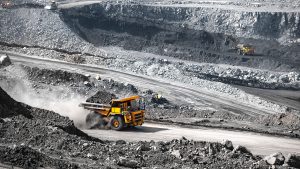
What can Australia do to bridge the gaps in policy and investment?
Our Federal Government has a Critical Minerals Fund and the upcoming National Reconstruction Fund, which provides equity loans for any manufacturing activity.
Australia is a small economy compared to the US and Europe, for example, and if these regions make a large intervention in the economy, they can do it.
If Australia tried to imitate this, the pools of funding available would be nowhere near as big. Hence, our approach has always been to work harder and smarter.
What specific expertise or capabilities does CSIRO bring to the table in terms of research, innovation, and technology development related to critical minerals extraction, processing, and recycling?
One interesting thing about CSIRO, both for people overseas and Australians, is its size and the range of areas it covers. From agriculture and space to data science, manufacturing, and the environment, CSIRO has a lot of diverse expertise under one roof.
For example, we’re currently working with our environmental teams to figure out how to recycle critical minerals within Australia, building on decades of experience. Since as far back as 1930, we’ve been studying Australian mineral processing and collaborating with local companies to solve various problems.
We cover everything from understanding how minerals form to improving mining techniques and processing efficiency. Our organisation aims to add value and integrate minerals into manufacturing processes, contributing to innovation across the entire supply chain.
At the moment, we are exploring nickel and lithium value chains, looking at deposit discovery, processing, and incorporating the material into a lithium-ion battery anode or cathode. We engage in a wide array of activities aimed at supporting the industry.
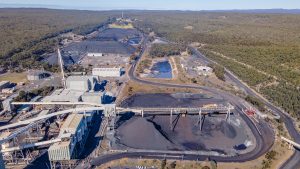
How significant is it that CSIRO has expertise across the entire value chain?
In Australia, the reality is that our manufacturing sector is relatively limited, and CSIRO was established to support industry.
Recently, we conducted a mapping exercise to identify our strengths along various value chains, such as batteries and rare earths. We excel in the early stages of discovery and extraction, as well as in implementation, systems thinking, and integration.
However, there’s a gap in the middle concerning value-added chemicals and precursor materials for manufactured products.
We’re actively working to bridge this gap, driven by both our commitment and government policies, as well as collaboration with companies equally interested in filling this area.
What are the key priorities and areas of focus for CSIRO in the near future regarding critical minerals research and development, and how do these align with the government’s strategic objectives outlined in the prospectus?
There are some noteworthy projects, many of which have been developed by CSIRO or ANSTO, our sister organisation, the Australian Nuclear Science and Technology Organisation.
Recently, there has been notable activity in Perth involving the production of cathode active materials. This process involves carefully combining nickel, cobalt, and manganese in precise proportions, precipitating them into the correct crystal form, and ensuring the appropriate particle size distribution for battery integration. It is a complex endeavour to get all these factors aligned.
This achievement was made possible through a collaborative effort involving industry consortia, cooperative research centres, universities, and CSIRO.
This breakthrough paves the way for several companies keen on establishing production facilities in Australia, highlighting that contributing to the battery value chain doesn’t necessarily mean manufacturing batteries locally.
Producing active materials is a vital aspect that doesn’t necessarily entail the entire battery assembly process.
These endeavours hold significant importance for Australia’s positioning in the critical minerals market in the coming years.

